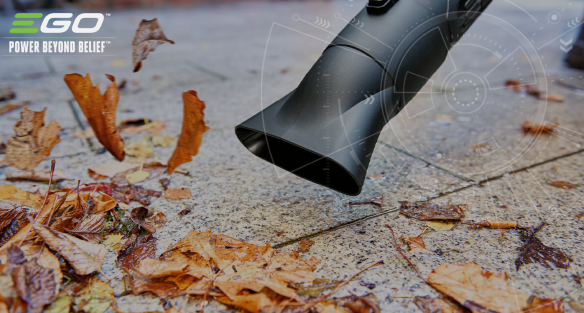Every gardener knows about the possibilities general organic matter has in the garden. Whether that be grass clippings, kitchen scraps, manure or even old bread. However, has it ever crossed your mind to single out just one organic material in particular? One which happens naturally in your garden, anyway?
The multiple uses of fallen leaves
Tree leaves are surprisingly versatile when it comes to garden benefits. To name a handful, fallen leaves can be:
- Shredded using a lawn mower and then spread around the base of plants to suppress weeds
- Added to the compost heap to give it a boost of carbon rich matter
- Dug into your soil to promote biodiversity and encourage soil-improving organisms such as earthworms
What you can achieve with them depends on several factors such as variety and how long you compost them for.
All leaves are worth the effort of collecting, especially since a garden tool like EGO’s LB5300E leaf blower makes the task so easy. If you want to prioritise a variety though, hornbeam, oak or beech are your best options. The leaves from these trees break down quicker than others and they require less attention, too.
Trees that produce needle-like leaves, such as Scots Pine and Norway Spruce, are best collected and composted separately. The nature of the needles means they make an acidic compost, which is perfect for specific plants like blueberries and heather.
Making leafmould
Another option for fallen leaves is making leafmould, which is done by composting only leaves. Leafmould has many uses around the garden. Leaves which have decomposed for 2 years or more are great to use as potting compost to grow seedlings, or add it directly to your compost mix to raise its nutrients and improve drainage.
To make leafmould, first simply collect fallen leaves that are littered about your garden in the Autumn. You can do this by hand, or you can choose the quicker and easier option, and blow wet or dry leaves to one side using an EGO battery leaf blower. Similarly, EGO’s BBA2100 Bristle Brush is more than capable of sweeping them to one side instead. Regardless of how you collect your leaves, you have two options of how to decompose them:
1. In a plastic bag
- First collect your leaves and place them loosely in a plastic bag until the bag is filled
- If the leaves are dry, moisten them with a fine spray of water
- Ensure all the leaves are moist, mixing them if necessary to distribute the moisture
- Tie the bag firmly and poke several holes in all sides of the bag. This allows air to pass through and aids leafmould production
- Leave in a designated area of the garden for 2 years
- After 2 years, remove the leafmould from the bags, saving the bags for the following autumn when you repeat the process
2. On a composting pile
- In the autumn, gather the fallen leaves and build a pile in a chosen place of the garden, ideally against a wall or fence, or in an enclosed space so they don’t blow away
- If the leaves are dry, wet them with a hosepipe or watering can
- Give the leaves a mix with a garden fork or by hand to make sure they’re moist
- Leave for 2 years and turn occasionally during this time to ensure air is circulated throughout the pile. Use a spade or shovel for this task and turn the leaves carefully as Hedgehogs may be hibernating in your leaf pile.
3. Adding straight to your compost heap
You can add fallen leaves to your regular compost heap. Mow your lawn areas over the fallen leaves - a mower like the EGO LM2021E-SP self-propelled mower will make light work of this. Mowing shreds the leaves into smaller pieces, so they decompose faster.
Once decomposition is complete, you can add the compost around the base of plants as a top dressing or as a medium to grow on seedlings.
What else you can do with fallen leaves
You don’t have to decompose leaves to reap their benefits, however. Simply blowing and then collecting fallen leaves in the Autumn and laying them thick around the base of plants can act as a mulch and repel weeds. If you choose to do this, make sure you weigh them down by moistening them first and placing damp grass clippings on top.
Whatever you choose to do with fallen leaves, you will want the right apparatus for your needs. Check out our range of battery lawn mowers and battery powered leaf blowers for the correct tool for your garden this Autumn.
